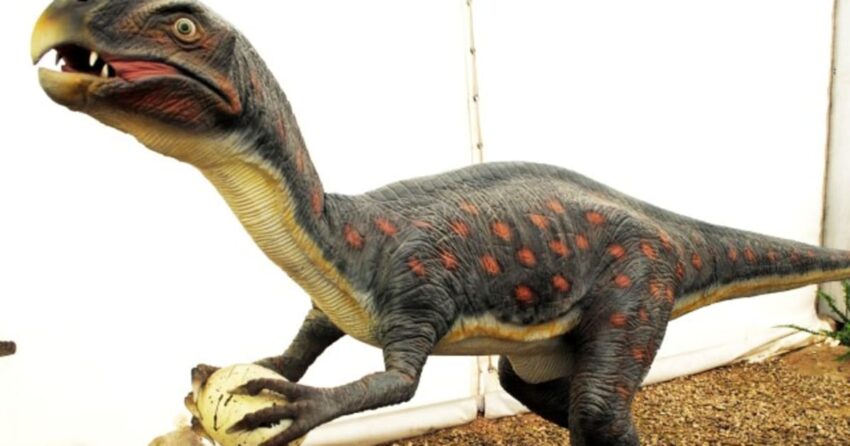Fossils provide invaluable windows into the lives of creatures that roamed the Earth millions of years ago. Among these prehistoric inhabitants, the Oviraptor, a small theropod dinosaur from the Late Cretaceous period, has captured the imagination of paleontologists and dinosaur enthusiasts alike. Once misunderstood as a mere “egg thief,” new fossil evidence has reshaped our understanding of this enigmatic dinosaur, offering intriguing insights into its behavior.
From Misunderstanding to Revelation
The name “Oviraptor,” which translates to “egg thief,” originated from a misinterpretation in the 1920s. The first discovered Oviraptor fossil was found near a nest of eggs in Mongolia, leading scientists to assume it was preying on them. However, subsequent studies revealed that the eggs likely belonged to Oviraptor itself, transforming its narrative from a predator to a nurturing parent.
This revelation came to light in the 1990s when fossilized Oviraptor skeletons were discovered in brooding positions atop nests. These findings demonstrated that Oviraptor, much like modern birds, likely engaged in active parental care, incubating its eggs to maintain optimal conditions for development.
Evidence of Brooding Behavior
The discovery of Oviraptor fossils atop clutches of eggs is among the most compelling pieces of evidence supporting its brooding behavior. The posture of the fossils, with their arms outstretched and body positioned to cover the eggs, mirrors the behavior of modern birds such as ostriches or emus. This suggests that Oviraptors were warm-blooded and relied on their body heat to incubate their eggs, a trait shared with avian species.
Interestingly, some nests contained multiple layers of eggs arranged in circular patterns, indicating that Oviraptors carefully organized their nests. Such meticulous arrangement suggests a level of behavioral complexity previously unappreciated in non-avian dinosaurs.
Dietary Insights
Fossil evidence has also shed light on the diet of Oviraptors. Their beak-like jaws, coupled with a lack of teeth, suggest they were omnivores. Stomach contents and associated fossils indicate a varied diet that included plants, small animals, and possibly shellfish. The strong, curved beak of the Oviraptor would have been well-suited for cracking open hard objects, supporting the theory that they were opportunistic feeders rather than specialized predators.
Social and Communal Behavior
Fossilized nesting sites often contain multiple Oviraptor nests in close proximity, implying that these dinosaurs may have exhibited colonial nesting behavior. This communal aspect is reminiscent of certain bird species that nest in colonies to reduce predation risks. Such findings hint at the possibility of social structures within Oviraptor populations, further bridging the behavioral gap between dinosaurs and modern birds.
Vocalizations and Communication
While direct evidence of Oviraptor vocalizations remains elusive, the structure of their skulls and cranial crests offers tantalizing clues. Some researchers speculate that the crests may have been used for visual displays or acoustic resonance, allowing Oviraptors to produce a range of sounds for communication. If true, this would further underscore their bird-like characteristics.
Conclusion
The story of the Oviraptor exemplifies the power of fossils to challenge assumptions and reveal the nuanced lives of ancient creatures. Once maligned as an egg thief, the Oviraptor now stands as a symbol of care, adaptability, and complexity in the dinosaur world. As more fossils come to light, our understanding of this fascinating dinosaur will continue to evolve, offering deeper insights into the behaviors that link the prehistoric past with the avian present. For more information click the link https://dinorepeat.com/

